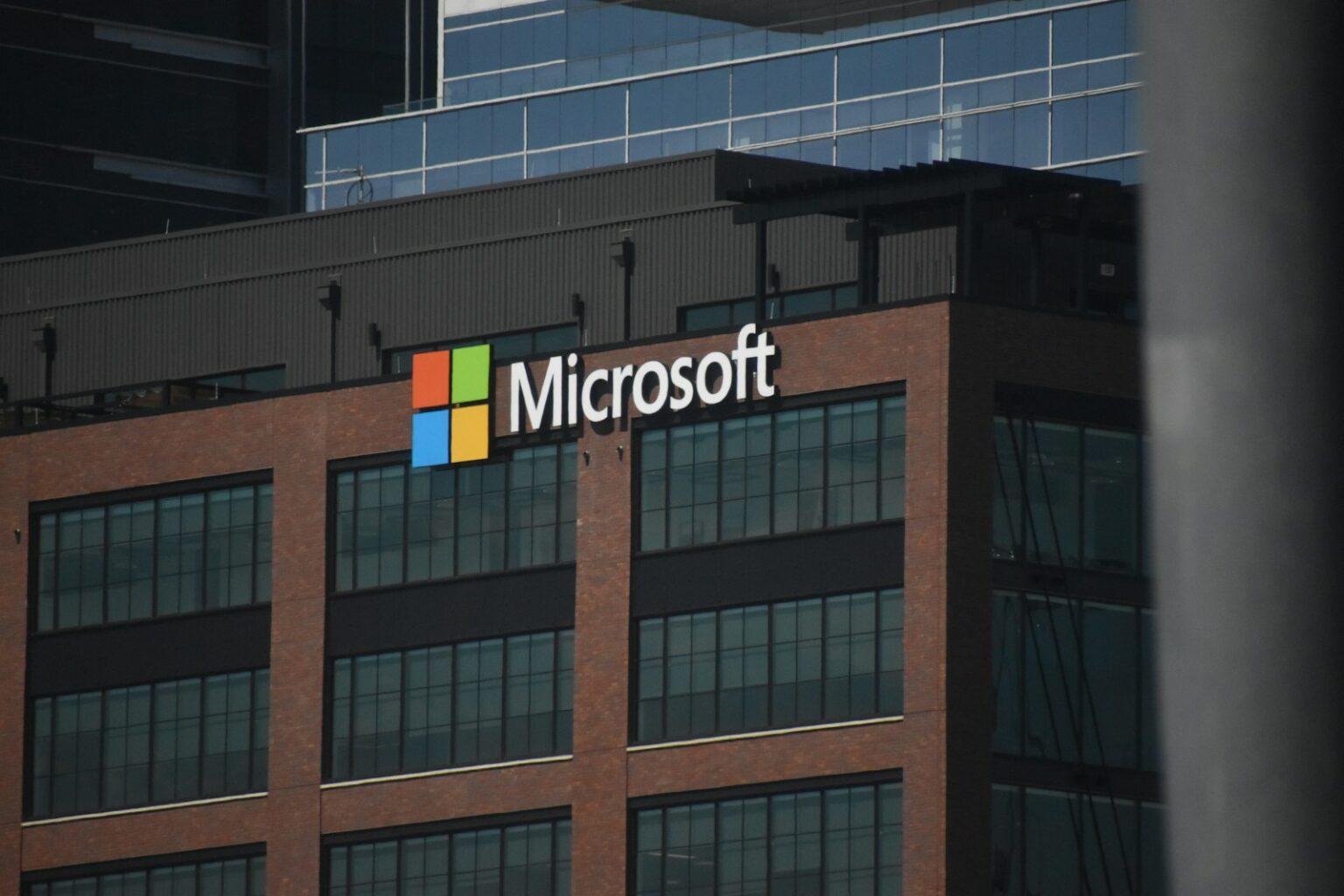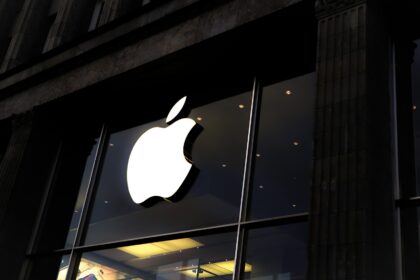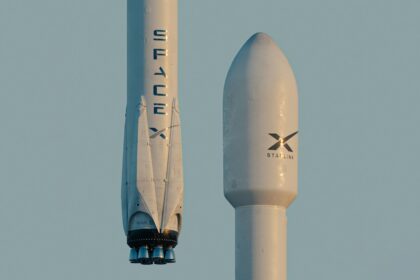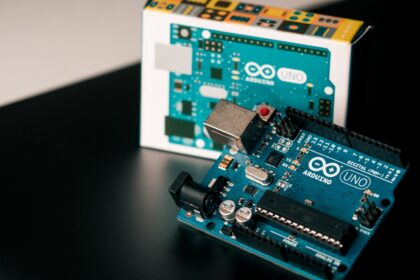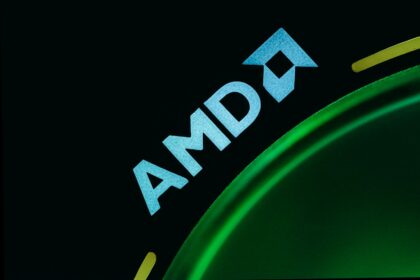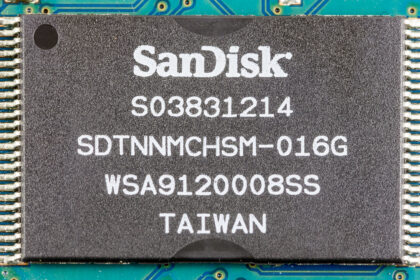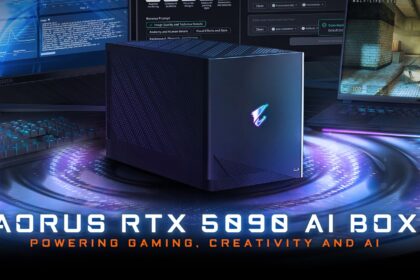Microsoft just dropped the biggest AI infrastructure bomb of 2025. The tech giant has deployed over 4,600 NVIDIA GB300 Blackwell Ultra GPUs in a massive cluster dedicated exclusively to OpenAI’s AI workloads. This represents the world’s first large-scale production deployment of NVIDIA’s most powerful AI chips.
The numbers that will blow your mind
Microsoft’s new Azure NDv6 GB300 cluster packs an incredible amount of computing power. The deployment includes 4,608 individual GB300 GPUs spread across 64 specialized racks. Each rack contains 72 Blackwell Ultra GPUs paired with 36 NVIDIA Grace CPUs.
The performance specifications are staggering. Each rack delivers 1.44 exaflops of FP4 tensor performance and houses 37 terabytes of ultra-fast memory. To put this in perspective, one exaflop represents a quintillion calculations per second. That’s more computing power than most countries have combined.
“Delivering the industry’s first at-scale NVIDIA GB300 NVL72 production cluster for frontier AI is an achievement that goes beyond powerful silicon”, said Nidhi Chappell, corporate vice president of Microsoft Azure AI Infrastructure.
Why this matters for the future of AI
This cluster will enable OpenAI to train AI models with hundreds of trillions of parameters. Current large language models like GPT-4 have roughly 1.8 trillion parameters. The new infrastructure could support models 100 times larger than anything we’ve seen before.
The system can reduce training times from months to just weeks. This acceleration means OpenAI can iterate faster and develop more powerful AI systems. For reasoning models and AI agents, this cluster provides the massive computing power needed for real-time inference.
Each GPU in the cluster connects to others through NVIDIA’s Quantum-X800 InfiniBand network. This provides 800 gigabits per second of bandwidth to every single GPU. The entire cluster functions as one unified supercomputer rather than thousands of separate processors.
GB300 versus previous generations
The GB300 Blackwell Ultra GPUs represent a massive leap forward from previous NVIDIA chips. Compared to the GB200, each GB300 delivers 50% more performance while consuming only slightly more power. The memory capacity has increased from 192GB to 288GB per GPU.
The secret weapon is the new FP4 precision format. FP4 allows the GPUs to perform calculations using 4-bit numbers instead of 16-bit numbers. This quadruples the effective performance for many AI workloads while maintaining accuracy. It’s like fitting four times as much computing into the same silicon space.
“Microsoft Azure’s launch of the NVIDIA GB300 NVL72 supercluster is an exciting step in the advancement of frontier AI”, commented Ian Buck, Vice President of Hyperscale and High-performance Computing at NVIDIA.
The engineering challenge behind the scenes
Building this cluster required Microsoft to completely reimagine their data center design. The GB300 chips generate enormous amounts of heat – up to 1,400 watts per GPU. That’s enough power to run a small house worth of appliances from each individual chip.
Microsoft developed custom liquid cooling systems to handle this thermal load. Each rack uses specialized coolant loops and heat exchangers to maintain stable temperatures. The cooling system itself represents a significant engineering achievement separate from the computing hardware.
The power requirements are equally impressive. The entire cluster consumes over 600 megawatts of electricity during peak operation. That’s roughly equivalent to the power consumption of a mid-sized city. Microsoft had to work with utility companies to ensure adequate power supply.
OpenAI’s exclusive access advantage
This cluster gives OpenAI a significant competitive advantage in AI development. While other companies wait months for access to advanced GPU clusters, OpenAI has immediate access to the world’s most powerful AI infrastructure.
The partnership extends beyond just hardware access. Microsoft and NVIDIA have optimized the entire software stack specifically for OpenAI’s workloads. This includes custom communication protocols, specialized storage systems, and optimized AI frameworks.
OpenAI can now experiment with model architectures that were previously impossible. The cluster enables training of multimodal AI systems that can process text, images, audio, and video simultaneously. This could lead to AI assistants far more capable than anything available today.
The broader AI infrastructure arms race
Microsoft’s GB300 deployment is part of a massive global AI infrastructure buildout. The company plans to deploy hundreds of thousands of additional Blackwell Ultra GPUs across their global data center network over the next few years.
This investment reflects the enormous computing demands of modern AI development. Training cutting-edge AI models now requires infrastructure investments measured in billions of dollars. Only the largest tech companies can afford to compete at this scale.
The timing coincides with OpenAI’s broader infrastructure expansion. The company recently announced the $500 billion Stargate project to build additional AI data centers across the United States. Microsoft’s cluster represents just the first phase of this massive expansion.
Competition heating up globally
Other major cloud providers are racing to deploy similar infrastructure. Amazon Web Services has announced plans for massive GPU clusters using NVIDIA’s upcoming Rubin architecture. Google is developing custom TPU chips specifically designed for large language model training.
The competition extends beyond just raw computing power. Each provider is developing specialized software optimizations and AI frameworks to attract the largest AI companies. The winner will host the next generation of breakthrough AI applications.
China’s major tech companies are also investing heavily in AI infrastructure. However, U.S. export restrictions on advanced semiconductors limit their access to the latest NVIDIA chips. This gives American cloud providers a significant technological advantage.
What this means for everyday users
While this cluster serves OpenAI exclusively, the benefits will eventually reach all users. More powerful AI models trained on this infrastructure could power better virtual assistants, more accurate language translation, and more capable creative tools.
The cluster enables OpenAI to develop AI agents that can perform complex multi-step tasks. These agents could revolutionize how we interact with software and automate many knowledge work tasks. The economic implications could be enormous.
However, the concentration of AI computing power raises important questions. A small number of companies now control the infrastructure needed to develop cutting-edge AI systems. This could limit innovation and increase the risk of AI development becoming centralized among a few major players.
Looking toward the future
Microsoft’s GB300 cluster represents just the beginning of the AI infrastructure revolution. NVIDIA is already developing next-generation chips with even higher performance. The Rubin architecture, expected in 2026, will offer another significant leap in AI computing capability.
The demand for AI infrastructure shows no signs of slowing down. Industry analysts predict that AI training costs will continue growing exponentially as models become more sophisticated. This could drive infrastructure investments into the trillions of dollars over the next decade.
For Microsoft and OpenAI, this cluster provides a crucial competitive advantage in the race to develop artificial general intelligence. The company or partnership that first achieves human-level AI capabilities could reshape the entire technology industry.
“Our collaboration helps ensure customers like OpenAI can deploy next-generation infrastructure at unprecedented scale and speed”, concluded Chappell, highlighting the strategic importance of this technological achievement.


